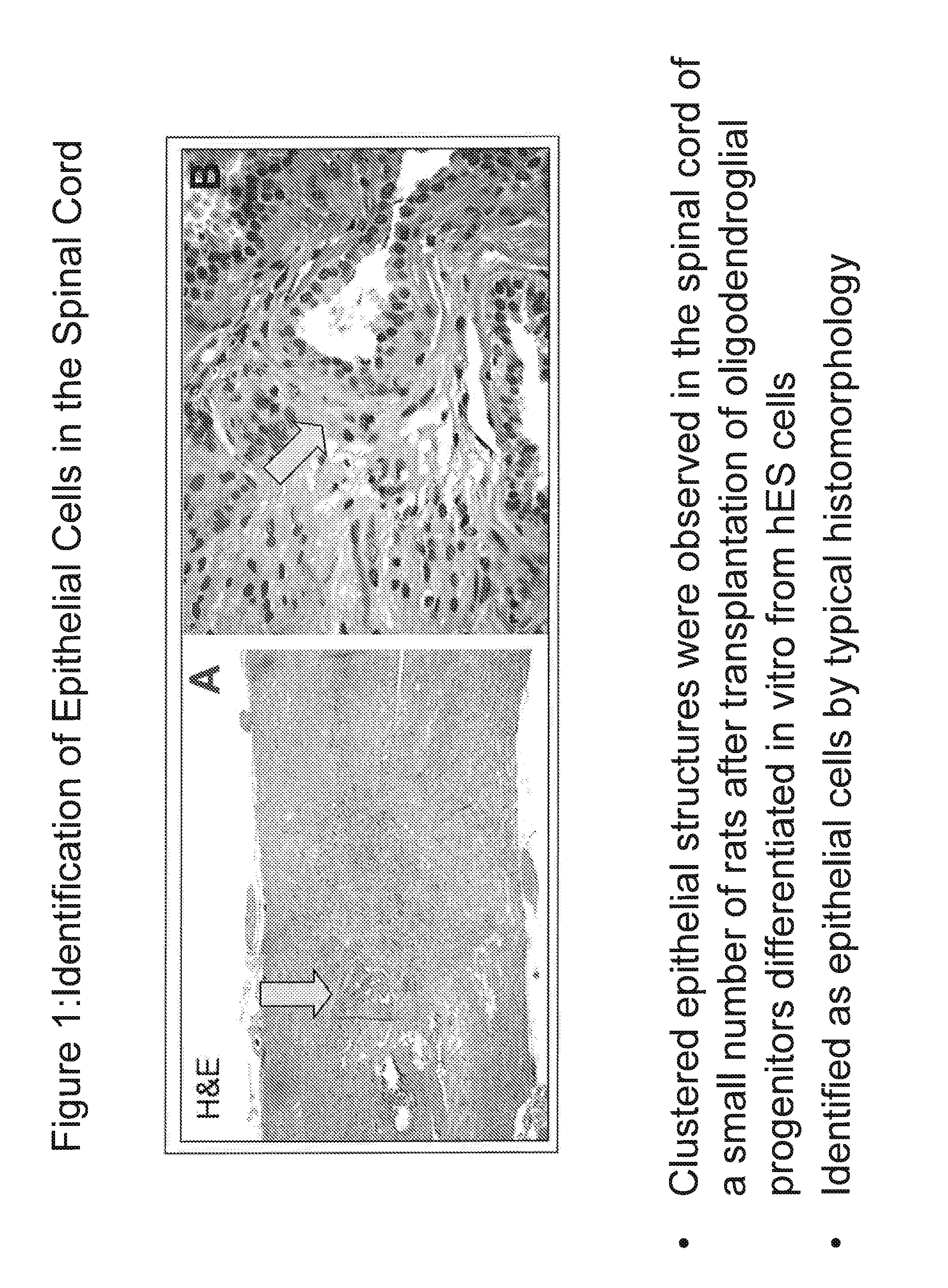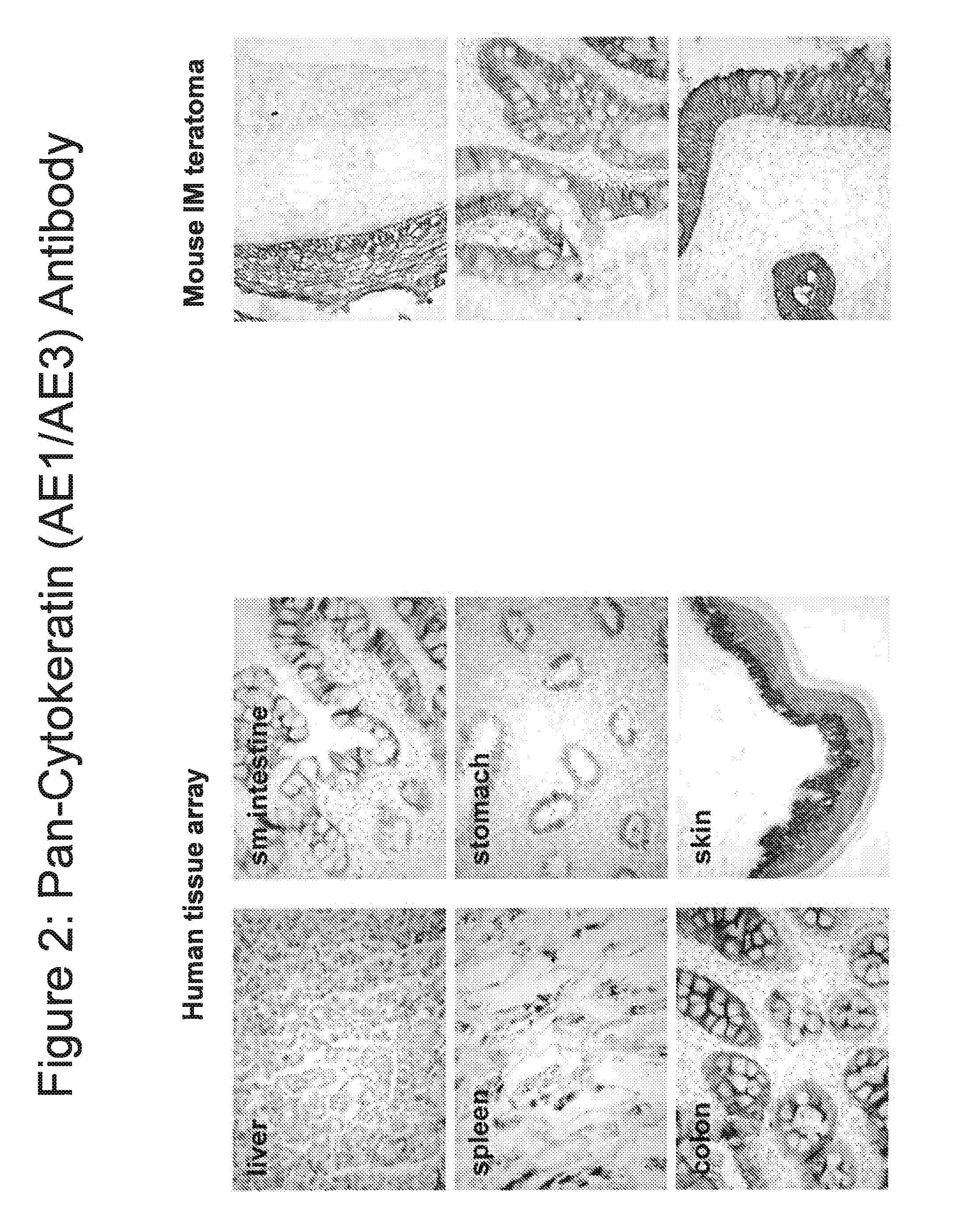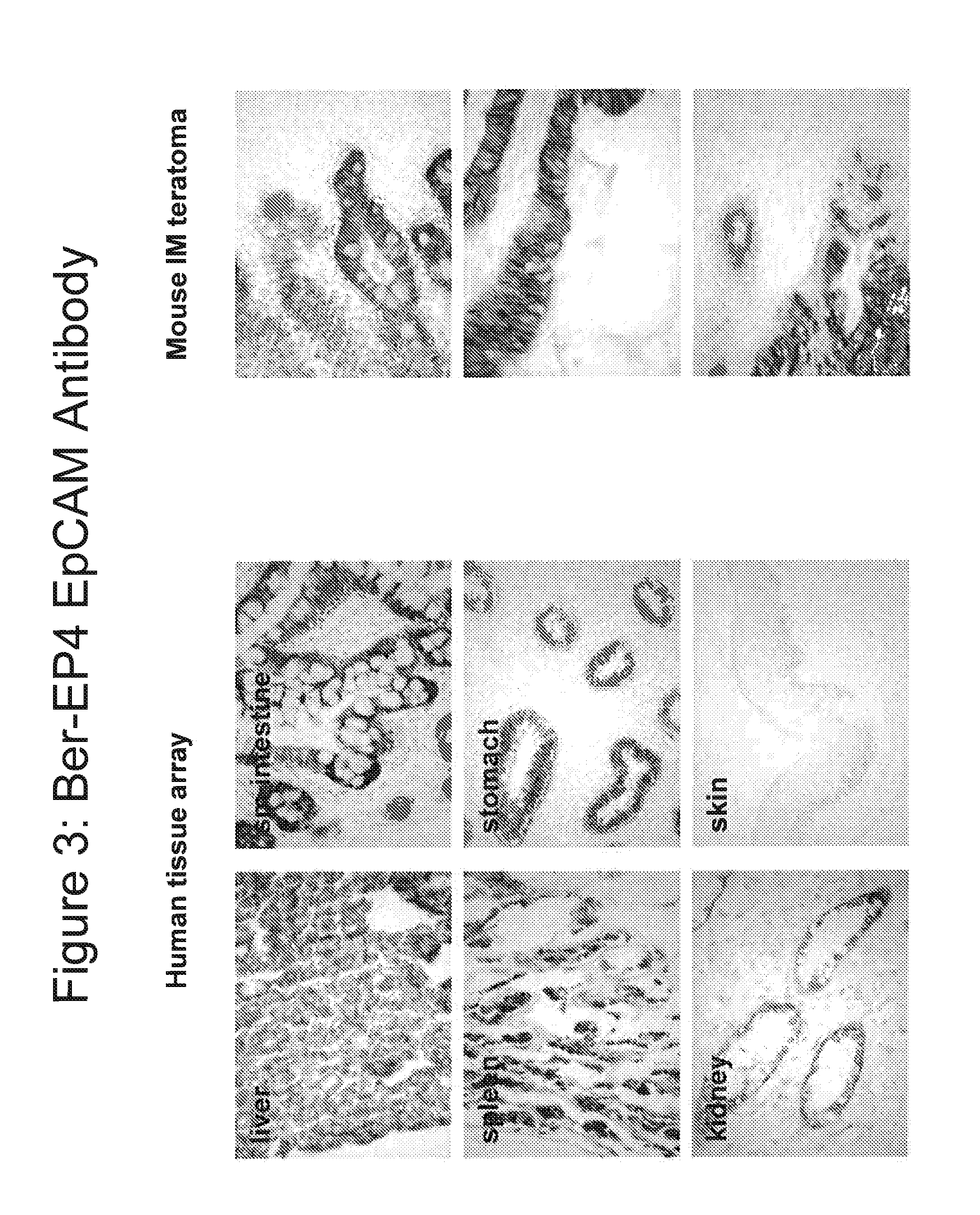Differentiated pluripotent stem cell progeny depleted of extraneous phenotypes
a technology of differentiation and stem cells, applied in the field of stem cell biology, can solve the problems of reducing the overall efficacy of cell preparation, and achieve the effects of reducing the number of undifferentiated cells, and reducing the number of cells
- Summary
- Abstract
- Description
- Claims
- Application Information
AI Technical Summary
Benefits of technology
Problems solved by technology
Method used
Image
Examples
example 1
Epithelial Cell Markers Correlate with Extraneous Phenotypes in Oligodendrocytes Differentiated In Vitro from Primate Pluripotent Stem Cells
[0252]Total RNA was extracted, according to the manufacturer's instructions using a Qiagen RNAEasy Kit (Qiagen, Valencia Calif.) from oligodendroglial progenitor cells differentiated in vitro from human embryonic stem cells. Vials containing 7.5×106 oligodendroglial progenitor cells each were used. These vials originated from three lots that generated a high number of clustered epithelial structures (CES) in vivo, and three lots that had low levels of CES in vivo. RNA integrity was confirmed using the Agilent bioanalyzer, (Agilent, Santa Clara, Calif.) and all samples used had an RNA integrity number (RIN) above 9.8. The 3′ IVT Express kit (Affymetrix, Santa Clara, Calif.) was used according to the manufacturer's instructions to generate cDNA from this RNA. Microarray analysis was performed according to the manufacturer's instructions with these...
example 2
Identification of Epithelial Structures in Rat Spinal Cords
[0254]Rats that were administered human oligodendroglial progenitor cells which were differentiated in vitro from hES cells on rare occasions developed clustered epithelial structures. FIG. 1 shows clustered epithelial structures stained with hematoxylin and eosin. The structures were identified as epithelial cells based on morphology.
[0255]To further characterize these clustered epithelial structures immunohistochemistry (IHC) was performed using antibodies to pan-cytokeratin or an antibody to EpCAM. The pan-cytokeratin antibodies (Millipore, Billerica, Mass.) were a mixture of two antibodies: anti-AE1 and anti-AE3. The AE1 antibody recognizes keratins CK10, CK14, CK15, and CK16 as well keratin CK19. The AE3 antibody recognizes keratins CK1, CK2, CK3, CK4, CK5 and CK6, as well as keratins CK7 and CK8. Keratin CK10 is expressed in squamous keratinzed skin and some gut cells. Keratin CK19 is expressed in secretory epithelia, ...
example 3
Characterization of Mixed Populations of Cells Comprising Oligodendrocytes
[0261]hES cells were differentiated into oligodendrocytes and oligodendrocyte precursors as described above and in U.S. Pat. No. 7,285,415. Two separate lots (M07D1A and 2008-05A-ms) were generated. The cells in both preparations were characterized by flow cytometry by labeling the cells with antibodies for the following epithelial markers: EpCAM (clone BER-Ep4) conjugated to ALexa fluor 647 (Invitrogen, Carlsbad, Calif.) and a marker associated with primate undifferentiated pluripotent stem cells: TRA-1-60 (Invitrogen, Carlsbad, Calif.). The secondary antibody used for TRA-1-60 was an anti mouse IgM A488 conjugated with Alexa Fluor® (Invitrogen, Carlsbad, Calif.).
[0262]Briefly, 5×105 cells were labeled per reaction in a volume of 100 μL. For primary antibodies 500 ng per label were used. The cells were incubated on ice for 15 minutes and then washed two times with staining buffer (0.5% Human serum albumin PBS...
PUM
| Property | Measurement | Unit |
|---|---|---|
| volume | aaaaa | aaaaa |
| volume | aaaaa | aaaaa |
| volume | aaaaa | aaaaa |
Abstract
Description
Claims
Application Information
 Login to View More
Login to View More - R&D
- Intellectual Property
- Life Sciences
- Materials
- Tech Scout
- Unparalleled Data Quality
- Higher Quality Content
- 60% Fewer Hallucinations
Browse by: Latest US Patents, China's latest patents, Technical Efficacy Thesaurus, Application Domain, Technology Topic, Popular Technical Reports.
© 2025 PatSnap. All rights reserved.Legal|Privacy policy|Modern Slavery Act Transparency Statement|Sitemap|About US| Contact US: help@patsnap.com



